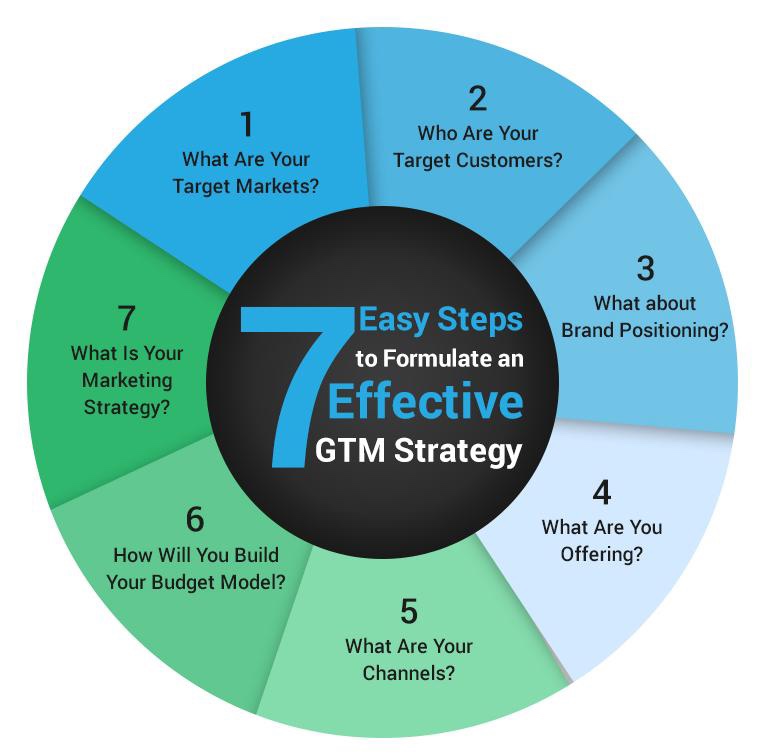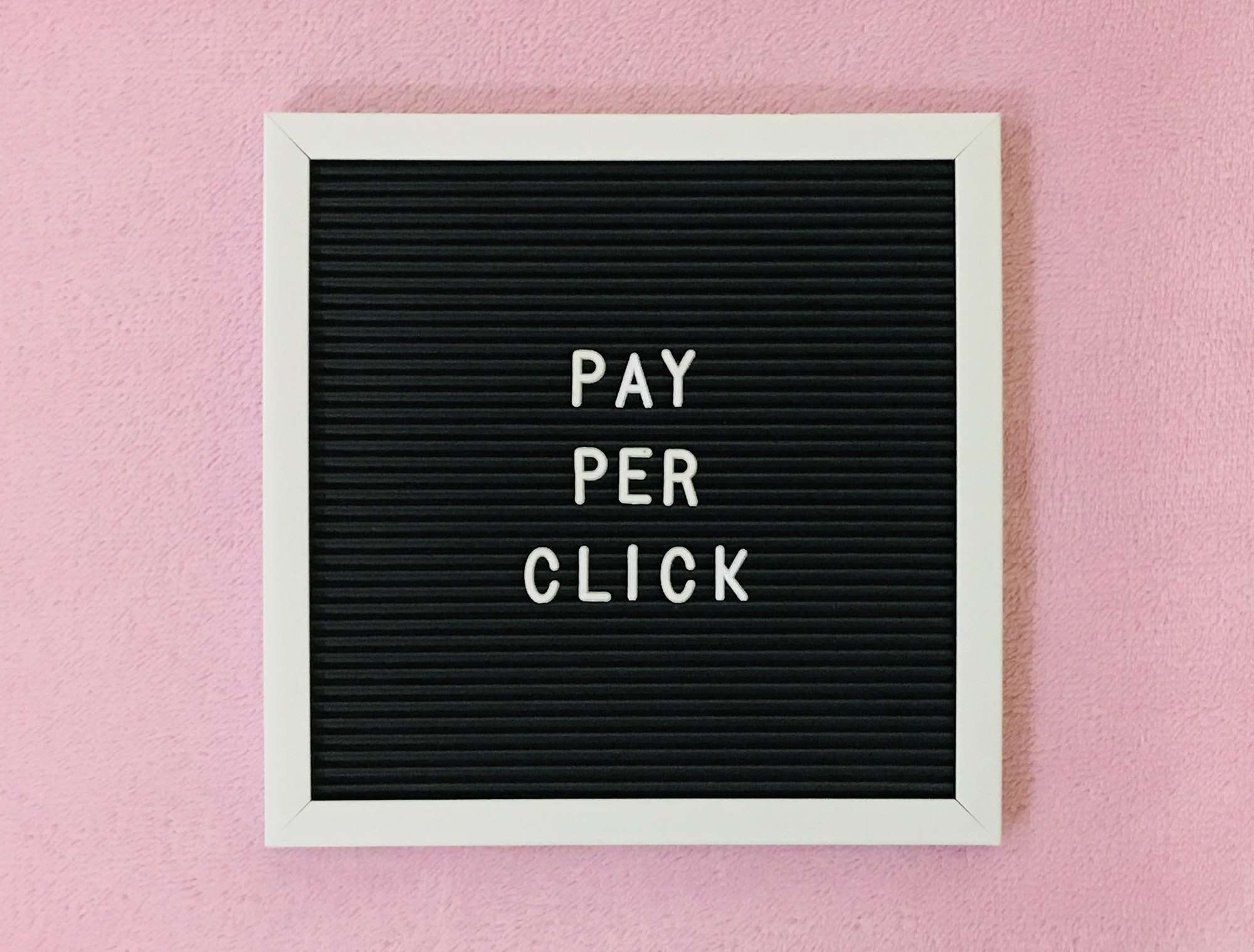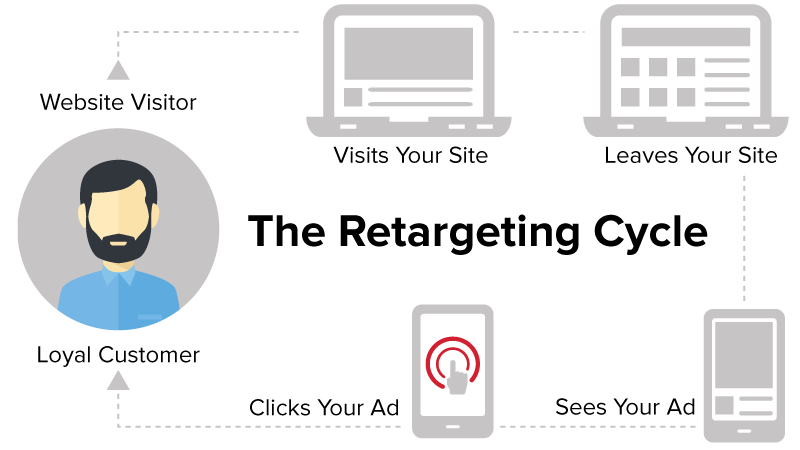“Display advertising doesn’t work.”
You’ve likely heard this. Especially if you run a SaaS company.
I’ll admit Display Advertising can be a tough nut to crack. It can take a bit longer to achieve a positive ROI depending on the length of your product’s buying cycle. Yet, Display advertising CAN work for B2B SaaS businesses. Many well-known SaaS companies already use Display to drive leads and sales. A few examples are Intuit, Zendesk, and Salesforce.
However, you don’t need to be a big start up like Dropbox with a huge ad budget. You just need to dial in your targeting, consistently A/B test and follow a proven advertising strategy.
This post outlines the 5 key components to designing an effective Display advertising campaign.
Step #1: Find the best traffic sources – Ad Networks
The first step is getting qualified prospects to your landing pages. SaaS companies need high-quality sources of traffic. They tend to target a more sophisticated audience made up of business owners and decision makers. You won’t find many “affiliate” traffic sources that cater to this audience.
Here are the 4 most used networks by SaaS businesses.
Google Display Network
The Google Display Network on Google Adwords should be your starting point. No network has the quality of traffic or the ability to scale that Google has. This is why most B2B advertisers use Google as their main traffic source. There is, however, one downside to Google: they’re extremely strict with what they’ll allow you to say in your ads and have on your landing pages. Everything will need to be 100% transparent. You’ll need to back all claims up with legitimate evidence. You’ll need to clearly explain your offer. You’ll need to have a privacy policy and make it clear how you handle user privacy. Most B2B SaaS companies won’t have issues with this, but it’s worth mentioning.
BingAds
BingAds is the 2nd to Google in traffic volume. Like Google, their publishers are also going to be of higher quality. The downside to BingAds is they have fewer publishers when compared to Google, making it harder to scale your campaigns. However, Bing is a great addition when you’ve already got your Google campaigns up and running.
Native Ad Networks (Outbrain and Taboola)
Native Ad Networks are the latest and greatest ad networks at the moment. They serve the “Recommended” and “Around the Web” ads you see on large publishers like Huffington Post, Business Insider and Forbes. Ads served by Native Ad Networks look like recommended content and news stories. This means the landing pages and creatives advertisers use tend to be in a different format. A few large SaaS advertisers (like Salesforce) use Native Ad Networks to drive traffic to blog posts or white papers.

Native Ad Network ads being served on Forbes.com
Prospects read the content and can opt-in to receive more information. This is a great, non “salesy” way to move prospects into your sales funnel. Some of the largest Native Ad Networks are Outbrain, Taboola, Content.Ad and rev:content.
Direct Buys
A Direct Buy is when an advertiser bypasses ad networks and ad exchanges and buys inventory directly from a publisher. This gives you the ability to negotiate prices. You can often get a much better deal with a Direct Buy than on an exchange or network.
Step #2: Find your best customers – Publishers
A “publisher” is the website that you buy ad inventory from. For example, Huffington Post is a publisher. This is one of the most important components and one of the number one reasons why people fail with display advertising. It goes without saying that you need to get your message in front of the right audience.
You’d never sell steaks at a vegan food festival. Yet a lot of advertisers try to sell their enterprise software to prospects on celebrity gossip sites. It sounds crazy, but I see it all the time.
Industry Dependent
The first place to begin when choosing publishers is to select websites with content related to your product.
Let’s use Quickbooks accounting software as an example. Quickbooks wants to target small business owners, accountants, or anyone who is going to do the books for small businesses. Intuit (the company who created Quickbooks) buys traffic on sites like accountingweb.com and journalofaccountancy.com. Both sites contain content related to accounting. People browsing these sites will have accounting on the brain. They’ll be more receptive to an ad about accounting software.

Example of a Quickbooks ad on AccountingWeb.com
Another example is Yahoo! advertising on Search Engine Land (a website targeted at SEM and SEO professionals) for their webcast. Search Engine Land’s audience will be interested in a webcast that teaches how to write better ad copy.

User Demographic and Mindset
One of the keys to success — and best ways to scale — is to not just target sites based on their content. There are only going to be so many accounting and SEM websites out there. You’ll soon run out of options for converting publishers. However, there are hundreds of news, political and general interest sites out there.
This is where it helps to know the demographic and psychographics of your prospects. There are likely certain political, religious and general interest sites that people who might be interested in your software regularly browse. For example, someone who is republican or democrat might be more likely to be an accountant, small business owner or SEM manager. You’d then want to target sites where these people hang out.
How do you find these sites?
This is where competitive intelligence comes in. You’ll want to browse — or use competitive intelligence software — and find sites that might be relevant to your target market. Take note of who advertises on these publishers. Are you repeatedly seeing ads from other SaaS companies or even general B2B business offers? Then you know this might be a good publisher for your company as well. Keep track of these specific publishers in an excel file. Also take screenshots of their ad creatives. You’ll want to create a “swipe file” with ad creatives that work for other B2B businesses.
Common Publisher Categories For SaaS Businesses
Most SaaS businesses end up selling to other SaaS businesses. This means there are a few common publishers categories that work well for most SaaS advertisers.
- Tech News – Business owners and decision makers want to stay on the pulse of what’s going on in the tech industry. The best place to reach them is through tech news websites. Some of the most common include Mashable.com, VentureBeat.com and TheNextWeb.com.
- SEO/SEM News Sites – Business owners and employees who might use your SaaS tool are likely going to be on internet marketing websites. Specifically, SEO and SEM. You’ll see a lot of SaaS and small internet businesses advertising on publishers like Search Engine Land, Marketing Land and Search Engine Journal.
- Job Sites – Businesses are always looking for a few good men and women. It might be a bit harder to drill down to target only business owners (and not unemployed job seekers) but many SaaS businesses advertise here. One advantage to job sites is that companies with enough cash to hire new employees probably have enough cash to afford your product. A few popular publishers in this space include jobs2careers.com and Monster.com.
- General Business News Sites – Similar to tech news, anyone interested in business might read sites like Business Insider, Business.com, Fortune and Forbes. These publishers are a great place to test out the Native Ad Networks we talked about in step #1.
Step #3: Get them to click your ads – Ad Creatives
The ad creative serves the purpose of cutting through the clutter and picking your prospects out from the crowd. Most B2B SaaS companies will be best served by using straightforward offers in most of their ad creatives. This selects only the most serious customers on a given publisher.
Most B2B SaaS companies rely on two different ad creative + landing page combinations:
The Free Trial Offer and the “Ethical Bribe”.
Free Trial Offer
A simple concept: the user can sign-up for a free trial of your software. It’s can work, but it’s not always the best route to take. Why? Take a look at the usage statistics of your free trial users. The majority login once and then never again.
Examples of Free Trial ads:

Ethical Bribe
You’re unlikely to get many sales or even free trial leads from Display or any other advertising channel. People are going to be hesitant about committing their time or money to anything they’re unsure about. You’ll need to educate them on how your specific solution can solve their problems. You can also show them how other companies have used your solution to solve their issues.
The way to do this is to offer an “ethical bribe”. An ethical bribe usually comes in the form of a white paper, guide or case study. The idea is to present your product in a way that convinces a prospect to at least give it their attention. Most advertisers force users to opt-in with a valid email address (and sometimes phone number) in order to download the ethical bribe. This allows the advertiser to pitch them through email marketing or even call them.

Ensighten creates software to help businesses manage their websites more effectively. This ad leads to an opt-in page to receive their free report, “How Enterprise Data and Tag Management Will Boost Conversions & Revenue Beyond Your Expectations”
The “ethical bribe” is more commonly used than the free trial offer. Most SaaS products require more customer education in order for the prospect to see the value of their software and even consider giving it a test run.
Ad Creative Formula
The best way to design higher converting ad creative is not to reinvent the wheel. The best strategy is to analyze the ad creatives of other SaaS companies (competitors and non-competitors) and “copy” their successful template. You can be sure that a specific “formula” is working well if it’s being used over and over again.
Here’s a basic formula you can follow. It might not be the optimal design for your specific product, but it will do the job 90% of the time.
- Company Colors – Most companies tend to use the colors that are shown on their landing page/logo. This helps the prospect begin to associate those specific colors with your brand. For example, the green in the Quickbooks ad above captures your eye and you begin to associate that color with Quickbooks (green is a great color for them because it’s also the color of money).
- Company Logo – SaaS advertisers also tend to use their logo within the ads to further the effort of brand recognition.
- Product image – Besides the logo, they usually show screenshots of the software being used on a monitor or phone. This instantly signals that they’re going to be led to a page all about a specific piece of software. If you’re doing lead generation with a white paper or guide, you can even put together a picture of an eBook cover or a PDF. Anything that makes it transparent what the user will receive when they click through tends to work very well.
- Benefit Driven Copy – Your copy should be benefit driven. You don’t want to list out what technical features your product includes. You want to list out the benefits your prospects receives by clicking through and signing up for a free trial or by downloading your ethical bribe.
- Call-To-Action Button – No need to get fancy here. All you need to do is tell them what they’ll receive after they click your ad. A simple “Download Your Free Guide” is often all you’re going to need. Buttons in your ad creative tend to work well because people are used to clicking on them. They see a button and they immediately know it’s meant to be clicked. Avoid using just simple text unless you find a way to make it stand out.
Here are a few different ads that follow the above guidelines quite well:

Step #4: Get them to convert – Landing Pages
The success of your Display campaigns has less to do with your ad creative, and more to with what happens after the click.
You can have the best copy. The best images. And the highest quality traffic. Yet, if your landing page isn’t designed for conversions… say goodbye to positive ROI.
The good part about landing pages for SaaS businesses is that simplicity seems to reign supreme here. You won’t need a fancy video sales letter or long-form sales page to get people to convert. You can just follow the formula of what the most successful SaaS Display advertisers are doing.
Ethical Bribe Landing Pages
These landing pages follow up on your offer of some sort of “ethical bribe” in exchange for your prospect’s contact info. These pages tend to be pretty simple and focused on one goal, which is getting their email address. Also a great way to cookie someone for retargeting for a webinar, more free content, free trial or a direct sale.
Example: Tableau

“Ethical bribe” landing page used by Tableau.
Tableau is data visualization and business intelligence software.
A large graphic right below the header with a headline that calls out what the prospect will get if they opt-in to receive the ethical bribe. In this case that comes in the form of a white paper that gives you five of the best practices for creating an effective dashboard. Below the call-to-action there is a bit more text, which explains what is contained in the whitepaper and why you should download it. Further down the page there is a short testimonial and a brief overview of what Tableau software does.
Free Trial Landing Pages
Offer your prospects a free trial to test out your software. This requires a different style of landing page, albeit very simple to design. Even though the trial is free, you’ll still have to get them excited enough about your product to actually use their free trial, because most people don’t.
Example: Kissmetrics

One landing page Kissmetrics has tested out to get free trial sign-ups.
Most free trial landing pages (like the Kissmetrics page above) include a few paragraphs of info about the product and what it does. These landing pages usually include the free trial sign-up for directly on the page. Very rarely will an advertiser make their prospect click through to another page to sign-up for a free trial.
So now you’ve got your traffic, your ad creatives and your optimized landing pages. But what happens if the people that come to your site don’t convert? Step #5 could be the most important part of your Display funnel, so read on.
Step #5: Didn’t convert? Follow-up with them.
The vast majority of people who see your landing page will neither sign-up for a free trial, opt-in or directly purchase your product, EVEN if you do steps 1-4 perfectly.
However, not all is lost. There is a way to follow-up with prospects who have already seen your page. This is called “retargeting”. It works like this: a user hits your page and is tagged with a piece of code (called a cookie). That cookie allows you to follow them around and serve them ads on other websites. Some people call them “stalker ads”. It might seem a bit creepy, but it works.
Retargeting works because people are busy. They might want your product, but something might have distracted at the moment of purchase/sign-up and now they’ve moved on. People need to be constantly reminded.
Retargeting is especially important for SaaS businesses with long sales cycles and high price points. Since the user has already seen your site and is familiar with your brand, most SaaS companies hit them with a free trial during their retargeting campaigns, not the initial campaigns.
Example: Optimizely
Retargeting ad creatives lean more towards being “branding” style ads. The prospect has already seen your site and has some familiarity with your brand. You don’t necessarily need to state what you do. You just need to give them a quick reminder of what your software is about (in this case “The #1 Website Optimization Tool”). Most retargeting ad creatives follow the simple formula of having a large headline, the brand’s logo and a big call-to-action.

“Branding” style remarketing ad. Shows the logo, basic text and a large call-to-action
As mentioned in the previous section, MuleSoft sends most cold traffic to a lead generation page where they can download a white paper. Once they’ve downloaded the white paper and are sold on the benefits of using MuleSoft in their business, they’re more likely to sign-up for a free trial.

Optimizely uses a simple free trial landing page that gives the user no other option but to test it out
Although the example of Optimizely is very basic, you can get things advanced very quickly with retargeting. You can show different offers, messages and opt-in opportunities depending on how long it’s been since they’ve visited the page. You can show different messaging to users who hit specific pages (e.g. someone who looks at your “tour” page might receive a different message than someone who just looks at the home page).
All of that is quite advanced and goes beyond the scope of this beginner post. But trust me when I tell you that retargeting is very powerful tool that ALL businesses should be using.
Conclusion
While the strategies in this post will get you started, I can’t emphasize enough that the key to seeing success with paid advertising is patience. Things will often not work on the first go. That’s okay. The key is to do your competitive intelligence and see what other companies are doing successfully and then test that out. Testing and patience are two of the most important aspects of Display, bar none. But trust me when I tell you that the sky is the limit when you get paid advertising converting. It’s one of the best ways to get a steady stream of customers and I highly recommend that any business take advantage of this amazing channel.











